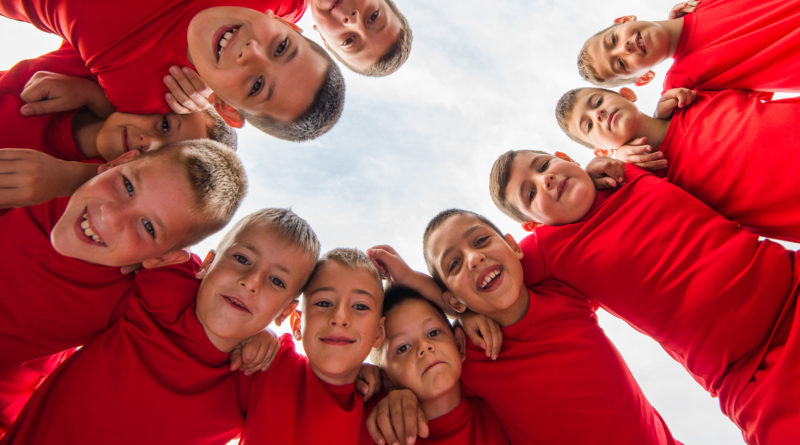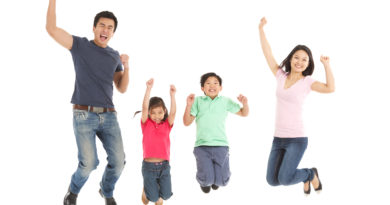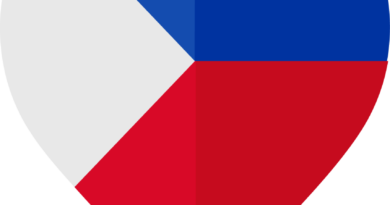Fun facts, food, music, language and more…
Children’s Games of Czech
1) Pesek (Duck -Duck Goose): For this game, all of the children sit down in a circle, facing one another. There is one child that is “it”, and they sing a song while going around in a circle. The person who is “it” goes around singing the song until he or she taps one of the seated children on the head, and once that person is tapped, they chase the person who is “it” until the person who is “it” takes the newly tapped child’s position on the floor. This game has no definite ending, and can go on as long as the children wish to play it.
Common Czech Cuisines
The traditional Czech cuisine consists of roast pork, with sour kraut and dumplings. Some popular foods all have the same sides, like soups, potatoes, and more. While the Czech Republic has recently turned the cuisine over to a healthier menu, one cannot forget what meals make the Czech cuisines memorable.
Popular soups: potato, garlic, and chicken noodle
Popular Main Dishes: Chicken, Pork, Beef, or Fish. Usually roasted, certain meats are served during certain events and certain times of the year. For example, Carp (a fish) is served only at certain times a year.
Popular Appetizers/Side Dishes: Boiled, Roasted, and Mashed Potatoes, Dumplings, Rice, and Bread
Popular Czech Sweets
If its sweet bread, it’s a popular Czechoslovakian dessert. Some common sweet treats of the Czech Republic includes, but are not limited to the following; pancakes, yeast cakes, fruit filled dumplings, sugar dumplings, and more. Strawberry cookies and galache are just two examples of the deliciousness served on occasion. Like in the United States, the Czech Republic enjoys cake as well, such as poppy seed and vanilla. Vanilla crescents, pecan cookies, and so much more are common desserts in Czechoslovakia.
Simple Czech Cuisine Recipes
- Yeast Dumplings
- Ingredients: 1/2 package dry yeast, 1 cubed bread roll, 2 cups warm water, 4 cups instant flour, 1 egg, 1 teaspoon sugar, 2 tablespoon salt
- Directions: – Dissolve yeast in lukewarm water with sugar
-In a big bowl combine flour, salt, egg and bread roll. After yeast rises, add to mixture and knead for 10 minutes. Form 4 rolls on a sheet with flour. Cover and let rise.
-Boil salted water and gently place in water – maybe one or two at a time. Cover and cook about 20 minutes.
-Test for doneness with toothpick. It should be light and puffy. Remove from water and slice.
2. Pancakes (Palačinky)
- Ingredients: 2 eggs, am, fresh fruit or even Nutella for spreading, pinch of salt, 1/4 cup butter for pan, 3 tbs sugar, 2 cups flour, 2 cups milk
- Directions: -Beat together eggs, salt, sugar milk, and flour until smooth. Heat a non-stick frying pan and brush with butter.
-Pour a thick layer of batter into the pan – spreading it to cover the base of the pan. The pancakes should be very thin. The thinner the better.
-Fry on both sides until golden brown. Spread with filling of your choice and roll into a tube. Sprinkle with powdered sugar or add whipped cream a cherry and be creative.
3. Garlic Dip
- Ingredients: 2 tablespoons mayonnaise, 3 garlic cloves, minced, 1 tablespoon sour cream, 1/2 cup shredded cheese (muenster, mozzarella, etc.)
- Directions: -Shred cheese coarsely. Combine mayonnaise, sour cream, and shredded cheese.
-Use a garlic press to mince the garlic directly over cheese mixture, Mix well and serve.
Children’s Games
The citizens of Czech Republic celebrate Children’s Day on June 1st annually. On this day, families take their children to local churches and parks, in which the parks hold carnivals and fun events for the kids of the republic. This day celebrates peace, harmony, and great health of all children.
3 Must Go See’s
- Prague City Center: one of the most visited areas; it is a central point of Prague. Here is where one can find shops, amusement centers, restaurants, and so much more. Many visitors and citizens visit here for a great time, or wonderful sights to see as well.
- Petrin Lookout Tower: 60 meters high, this tower is compared to the Eiffel Tower. Many people use the lift to get to the top, which hovers on the hill over the city. It’s a major tourist attraction.
- Prague Castle: Holding the Bohemian crown jewels on display, everyone who visits has no other option than to stop at the most common viewed place in Prague. Standing as one
- of the grandest and largest castles in the world, it holds many cathedrals, museums, galleries, and gardens.
Festivals/Celebrations of Czech Republic
- New Year’s: While tourists fill the streets of Prague, the local citizens escape the city for the mountains. Regardless of where everyone is, everyone engages in the festivities of fireworks and family time to bring in the New Year.
- Folklore Festival: This festival celebrates the history of Prague. For three days, colorful mini festivals fill the city, with food, music and much dancing in the streets.
- Easter: The tradition of Easter in Prague is for a young boy to chase a girl with branches and switches, to ward off ugliness for a year, and the girl must give the young boy a colorful egg.
Fun Facts
- Czech people are the heaviest beer consumers
- There are 2000 castles in the Czech Republic
- The official language of Czech Republic is Czech.
- About 59% of the population is agnostic, atheist, or non-believer. About 26.8% is Roman Catholic while 2.5% is Protestant.
- The country has four national parks, the oldest being Krkonoše National Park (Biosphere Reserve). The other three are Šumava National Park (Biosphere Reserve), National Park Podyjí, and Èeské Švýcarsko National Park.
- The former tennis champion Martina Navratilova, statistically the second best female player of the 20th century behind Steffi Graf, is a Czech.
Czech Customs and Culture
– Do not go to someone else’s home without bringing flowers, or a sweet treat
– You are expected to remove your shoes upon visiting someone’s home, most homes will have slippers for you
– Czech culture means less private space, culturally, they are a lot closer than Western civilization
– They seldom call people by their first name, unless they are family
– Initial greetings are formal and reserved
– The oldest woman or honored guest is generally served first.
Sounds of the Czech Republic
Traditional Czech Republic music requires traditional instruments. Majority of the instruments used are handmade, and are done so delicately. The wood chosen for these instruments is an intricate process in itself, as the trees used for them have to be at least 100 or more years old. Fiddles, drums, and accordions are some examples, but the saxophone is a widely used instrument as well. Some traditional music genres of the Czech Republic includes but are not limited to; modern music, folk music, alternative music, jazz, and the blues. One of the most notable Czech Republic marks of music is the “Underground Movement,” which battled conformity, political oppression, and consumerism. In the 1960’s, the communist government did not agree with this movement, as it was a “threat to society.” Yet, Westernized music does not fail to make its way to the Czech Republic for the younger generation who is not as into traditional music as their elders.
Czech Attire
A lot of Czech Republic clothing is determined by the area and time period of which it derived, and its purpose.
– Blata: Lying in the České Budějovice, Tábor, Jindřichův Hradec and Vodňany regions, the women’s clothing is decorated lavishly, and extremely embroidered. The Plena is the most common part of any clothing outfit, and resembles a decent sized scarf. In the 19th century, chemises were added to it as embroidery, an in the early 20th century late 19th century, beads were added as well.
– Doudlebsko: This area is in South Bohemia. This area is the poorer region, and their clothing reflects it. Their clothing is less lavish, and less embroidered, rather simple and plain. Males are often seen wearing bearskin trousers, a shirt, and a hat. Belts are worn to carry money, not for fashion.
These are just a couple of examples. Clothing depends on the region, the status of the individual and/or family, and the time period of which the clothing was introduced to the Czech society.

Online Czech lessons for kids: dinolingo.com




this is a really good website i will be coming back for more research you are awesome thanks
by unknown
yeah but i didnt get everything i needed for my project:/
this was a pretty good website got some information on what im doing but not enough